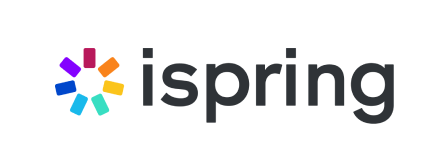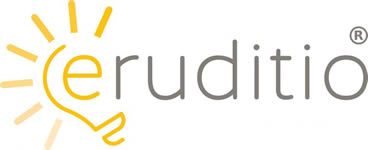
Empowering Your Learning Journey
Online Courses and Webinars
Develop and offer online courses and webinars to make education more accessible.
Explore Benefits arrow_forward
Connecting Minds
Learning Management Systems (LMS)
Implement an LMS to manage and track online learning content.
Explore Benefits arrow_forward
Powering up your potential
Gamification
Use gamification techniques to make learning engaging and fun.
Explore Benefits arrow_forward
Elevating Your Learning Experience
Mobile Learning Apps
Create mobile apps for on-the-go learning.
Explore Benefits arrow_forward
Inspiring Lifelong Learners
Personalized Learning
Utilize AI and data analytics to personalize learning experiences.
Explore Benefits arrow_forward0{{current_slide_index}} | 0{{total_slide_count}}
5 Digital Learning Solutions
Online Courses and Webinars
Learning Management Systems (LMS)
Gamification
Mobile Learning Apps
Personalized Learning
Digital Learning
solutions’ Benefits
- Accessibility: Online courses and webinars can be accessed from anywhere, allowing learners to participate regardless of their geographical location. This increases inclusivity and eliminates the need for physical presence.
- Convenience: Learners can choose when and where they want to engage with the content, providing flexibility to balance learning with work, family, or other commitments.
- Cost-Efficiency: Online courses often cost less than traditional in-person education, as they reduce expenses associated with travel, accommodation, and printed materials.
- Self-Paced Learning: Learners can progress at their own pace, ensuring that they fully understand the material before moving on. This accommodates a range of learning styles and speeds.
- Diverse Content: Online courses and webinars cover a wide range of topics, making it easy for learners to find specific, specialized content tailored to their interests and needs.
- Interactivity: Many online courses incorporate interactive elements, such as quizzes, discussion forums, and live Q&A sessions, to keep learners engaged and promote active learning.
- Scalability: Organizations can reach a large audience simultaneously, making online courses and webinars an effective solution for training and educating a large number of participants.
- Analytics: Online platforms can track learner progress and performance, providing valuable data for instructors to adapt and improve the content.
- Continuous Updates: Digital content can be easily updated to reflect the latest information and developments, ensuring that the material remains relevant.
- Global Reach: Online courses and webinars have a global reach, enabling organizations to tap into a worldwide audience and potentially expand their influence.
- Efficient Training: LMS streamlines the delivery of training and educational content, making it easily accessible to learners. This efficiency saves time and resources.
- Scalability: It accommodates organizations of all sizes, from small businesses to large enterprises, allowing them to scale their training efforts as needed.
- Customization: Our proposed LMS can be tailored to match the unique needs and branding of our clients, creating a personalized learning experience.
- Centralized Content: It provides a centralized platform for hosting and organizing all training materials, ensuring consistency and easy content management.
- Tracking and Reporting: LMS offers robust tracking and reporting tools, enabling administrators to monitor learner progress, assess performance, and make data-driven decisions.
- Cost Savings: By reducing the need for physical materials and in-person training, LMS helps organizations cut down on training costs.
- Accessibility: Learners can access content from anywhere with an internet connection, promoting learning flexibility and remote access.
- Consistent Quality: LMS ensures that all learners receive the same high-quality content and instruction, maintaining standards across the organization.
- Compliance and Certifications: It simplifies compliance training and certification management, ensuring organizations meet regulatory requirements.
- Engagement and Interactivity: Our proposed LMS often includes interactive features like quizzes, forums, and multimedia, enhancing learner engagement and retention.
- Feedback and Collaboration: It facilitates communication and collaboration between learners and instructors, fostering a dynamic learning environment.
- Analytics for Improvement: Data collected through the LMS can be analyzed to identify areas for improvement and optimize training programs.
- Global Reach: Our proposed LMS allows organizations to reach a global audience, making it an ideal solution for international or geographically dispersed teams.
- Engagement: Gamified learning makes education more engaging and enjoyable, increasing motivation to participate and complete courses.
- Active Learning: Interactive elements in gamification encourage active participation, enhancing the retention of information and practical skills.
- Progress Tracking: Gamified systems often offer clear progress tracking, allowing learners to monitor their advancement and set goals.
- Competition and Collaboration: Competitive elements in games can stimulate healthy competition, while collaborative features encourage teamwork and knowledge sharing.
- Real-World Application: Gamification can simulate real-world scenarios, helping learners apply knowledge and skills in practical situations.
- Immediate Feedback: Gamified activities provide immediate feedback, enabling learners to correct mistakes and improve their performance quickly.
- Customization: Gamification allows for personalized learning paths, accommodating individual learning styles and preferences.
- Increased Retention: Due to its interactive and immersive nature, gamification tends to result in higher knowledge retention.
- Problem-Solving: Games often require critical thinking and problem-solving skills, helping learners develop these essential abilities.
- Fun and Enjoyment: Learning becomes a more enjoyable experience, reducing the perception of tedium associated with traditional learning methods.
- Accessibility: Mobile learning apps enable learners to access educational content anytime, anywhere, promoting flexibility and convenience.
- Engagement: Interactive features, multimedia, and gamification in apps make learning more engaging and enjoyable, leading to better retention of information.
- Personalization: Apps can tailor content to individual learner needs, adapting to their pace and preferences.
- Interactivity: Mobile apps often include quizzes, discussions, and real-time feedback, promoting active learning and knowledge application.
- Offline Access: Some apps allow content to be downloaded for offline use, making learning possible even without a constant internet connection.
- Progress Tracking: Learners can easily monitor their progress, view achievements, and receive performance analytics, promoting self-assessment and motivation.
- Cost-Effective: Mobile learning reduces the need for physical learning materials and classroom infrastructure, saving costs for educational institutions.
- Scalability: Mobile apps can be used to reach a large and diverse audience, making them ideal for organizations aiming to scale their learning programs.
- Up-to-Date Content: Apps can quickly update content to reflect the latest information and changes in the field.
- Immediate Access to Resources: Learners can access a wealth of resources, such as e-books, videos, and interactive simulations, at their fingertips.
- Enhanced Engagement: Personalized learning tailors content and activities to individual preferences and needs, making learning more engaging and relevant to each learner.
- Improved Learning Outcomes: Learners are more likely to retain information and master concepts when the content aligns with their pace and learning style.
- Flexibility: Personalized learning allows learners to choose when and where they study, accommodating various learning schedules and preferences.
- Customized Pace: Learners can progress at their own speed, ensuring they grasp concepts fully before moving on to the next topic.
- Targeted Support: Personalization identifies areas where learners struggle and provides additional support or resources, ultimately leading to better performance.
- Data-Driven Insights: Educators and institutions can gather valuable data on learner progress, enabling them to refine teaching methods and curricula.
- Increased Motivation: Personalized learning boosts learner confidence and motivation as they experience success and progress in their learning journey.
- Inclusivity: Personalized learning can be adapted to accommodate diverse learning abilities and needs, making education more inclusive.
- Cost-Efficiency: Institutions can optimize resource allocation by focusing on the specific needs of learners, potentially reducing unnecessary expenses.
- Lifelong Learning: Personalized learning encourages a culture of continuous learning, preparing individuals for a rapidly changing world.






Stay In Touch